
Muscari: 8 beautiful associations
In the garden, in borders or in pots
Contents
Symbols of the arrival of spring, prolific and inexpensive, Muscaris are small bulbous plants that lend themselves to beautiful combinations to enhance your garden.
Cheerful yet discreet, Muscaris thrive alongside other spring bulbs, Anemone sylvestris, Hyacinths, Ipheions, Iris reticulata, Erythrones, daffodils, jonquils, tulips, and crocuses. Planted in numbers, these small bulbs create carpets of blue, white, or even pink flowers. They thrive in full sun or partial shade at the foot of trees and are essential for dressing a pathway border, a sunny rockery, or even in Japanese-style gardens.
In contrasting blue/yellow-green or blue/red combinations, or in fresh white/blue scenes imbued with delicacy, they easily integrate into all settings. When paired together, Muscaris create fantastic blue waves at the heart of spring. All are suitable for pot cultivation on a windowsill or balcony, mixed with Pansies, small Daffodils, Forget-me-nots, or primroses.
Muscaris bring freshness and light to flower beds. How can you best combine them in the garden? Discover our ideas for successful combinations!
With daffodils and jonquils
Create a springtime spectacle by combining a mix of small Muscari bulbs with daffodils and jonquils. The sky-blue cluster Muscari Muscari ‘Early Magic’, ‘Dark Eyes’ or violet-blue Muscari latifolium will create a lovely contrast against intense yellow flowers and green-yellow foliage. They also pair beautifully with small milky-white daffodils like Narcissus ‘Petrel’ or ‘Dreamlight’, positioned at the front of a flower bed, underplanted with herbaceous perennials or at the base of deciduous trees. You will particularly highlight the blue tones of the Muscari in contrast with the glaucous foliage and the acid-green inflorescences of euphorbias.
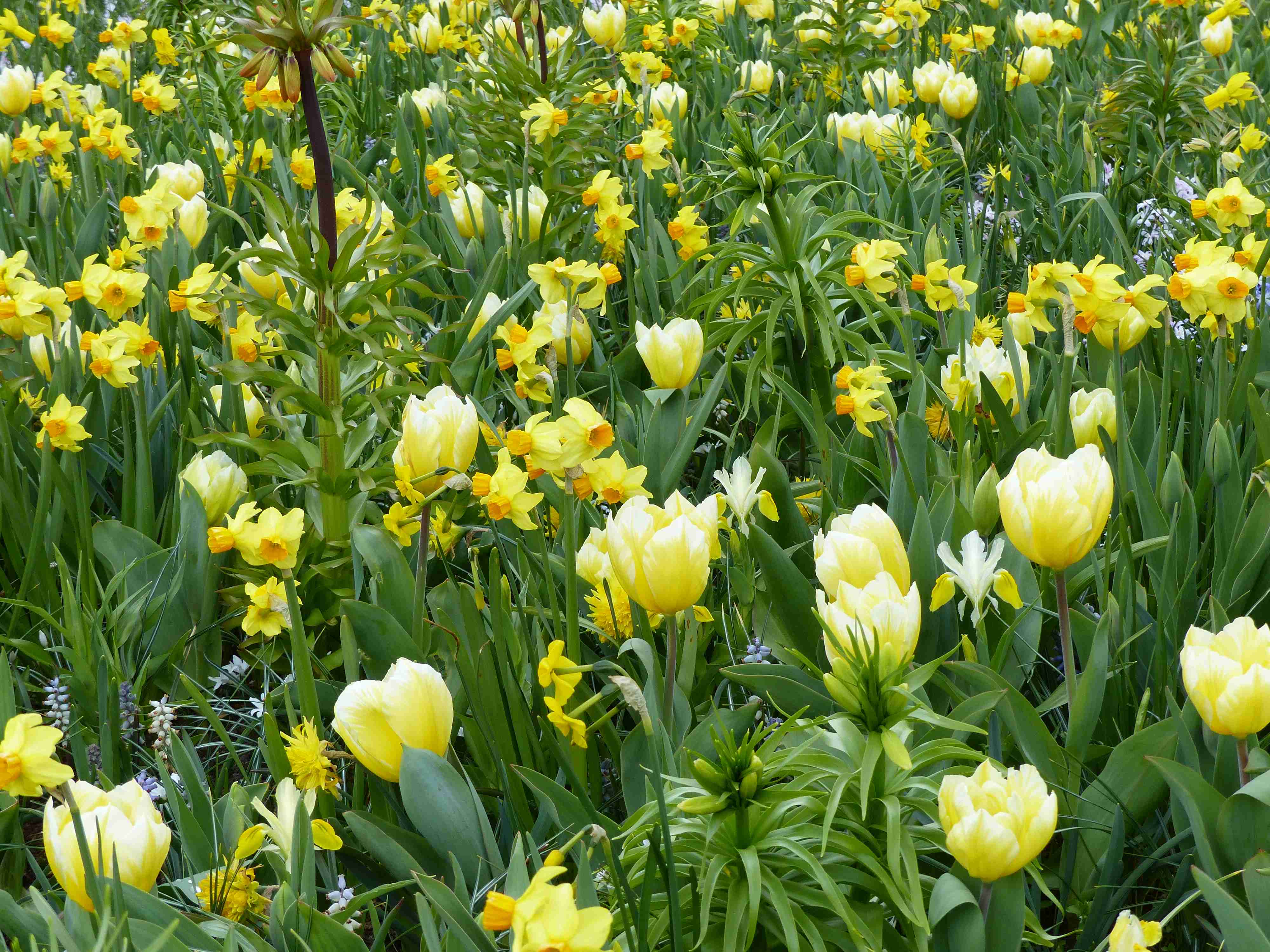
Tulip ‘Sweetheart’ – Daffodil ‘Bittern Rip’ and ‘Van Winkle’ – Muscari – Iris bucharica
Read also
Muscari: planting, growing tips and careIn naturalized tapetum
Almost all small bulbs naturalise, returning faithfully each year, increasingly numerous and more floriferous, eventually forming large carpets in two or three years, whether in a short grass meadow, a woodland, or a perennial bed. Muscari bulbs slip in everywhere without disturbing other plants and are invaluable for filling gaps! Their graceful silhouettes harmonise well with the slender stems of Tulips.
With Muscari, it is very easy to create a flowering and fragrant carpet in spring. Plant a mix of Muscari in mass without skimping on the quantity and pair them with Anemones, Crocus tommasianus ‘Barr’s Purple’, Hyacinths ‘Woodstock’, woodland Tulips, reticulated Irises, and botanical Tulips like the whittallii copper-orange.
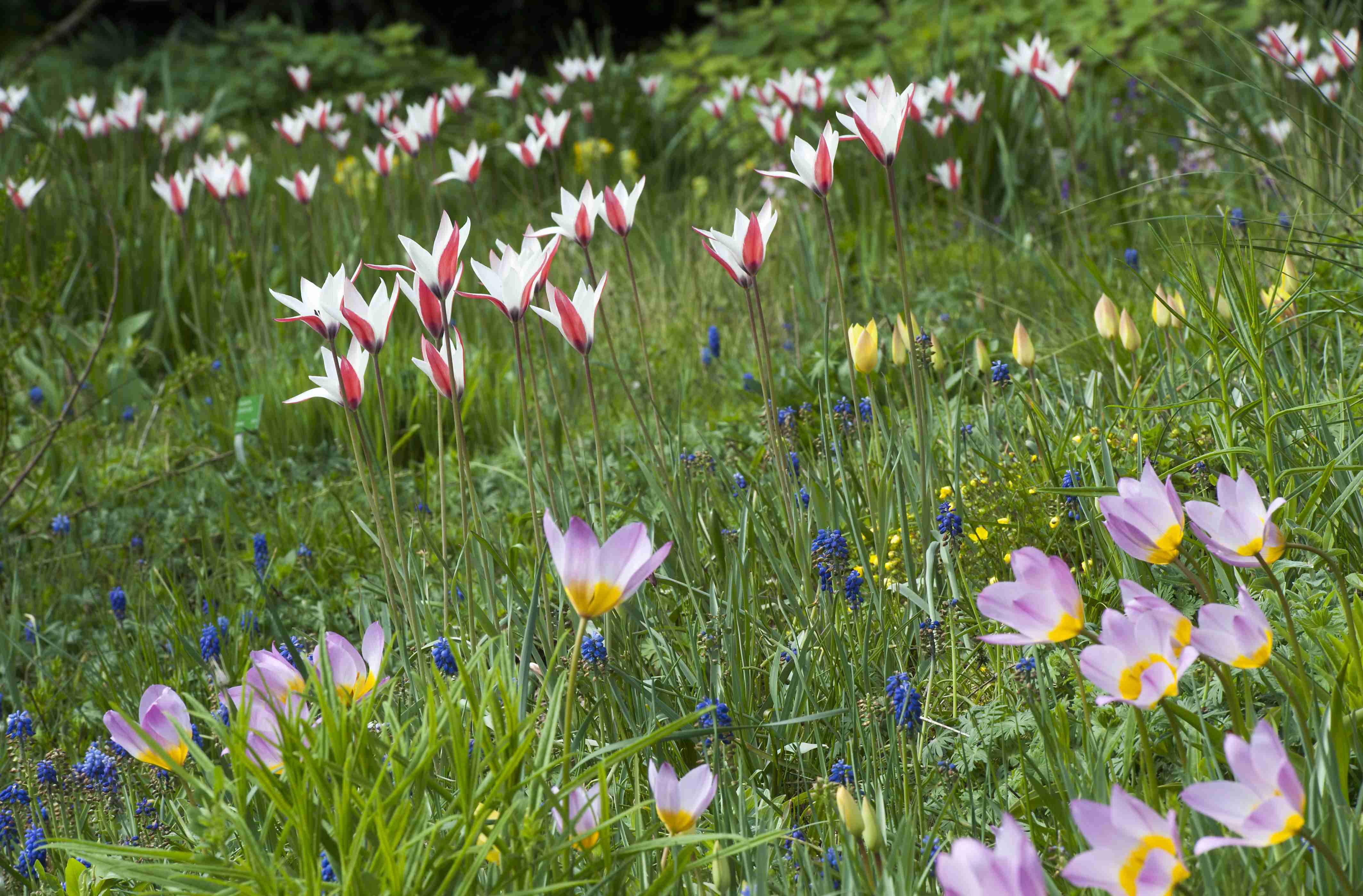
Muscari mixed among the botanical tulips bakeri ‘Lilac Wonder’ and T. clusiana ‘Peppermint Stick’
Discover other Muscari
View all →Available in 0 sizes
Available in 1 sizes
Available in 1 sizes
Available in 1 sizes
Available in 1 sizes
Available in 1 sizes
Available in 0 sizes
Available in 0 sizes
Available in 1 sizes
Available in 1 sizes
With tulips
Muscari bloom in spring, they are the perfect companions for Tulips, with which they create fresh spring scenes. For compositions that embody simplicity, choose white Muscari ‘White Magic’ or ‘Pink Sunrise’, their pure and pastel colours will pair well with the soft pink flowers of the botanical Tulip clusiana ‘Lady Jane’, and the snow-white Darwin Tulip ‘Hakuun’. For more contrasting combinations, opt for the vibrant complementary colours of the botanical Tulip greigii ‘Little Red Riding Hood’ or the early single Tulip ‘General De Wet’.
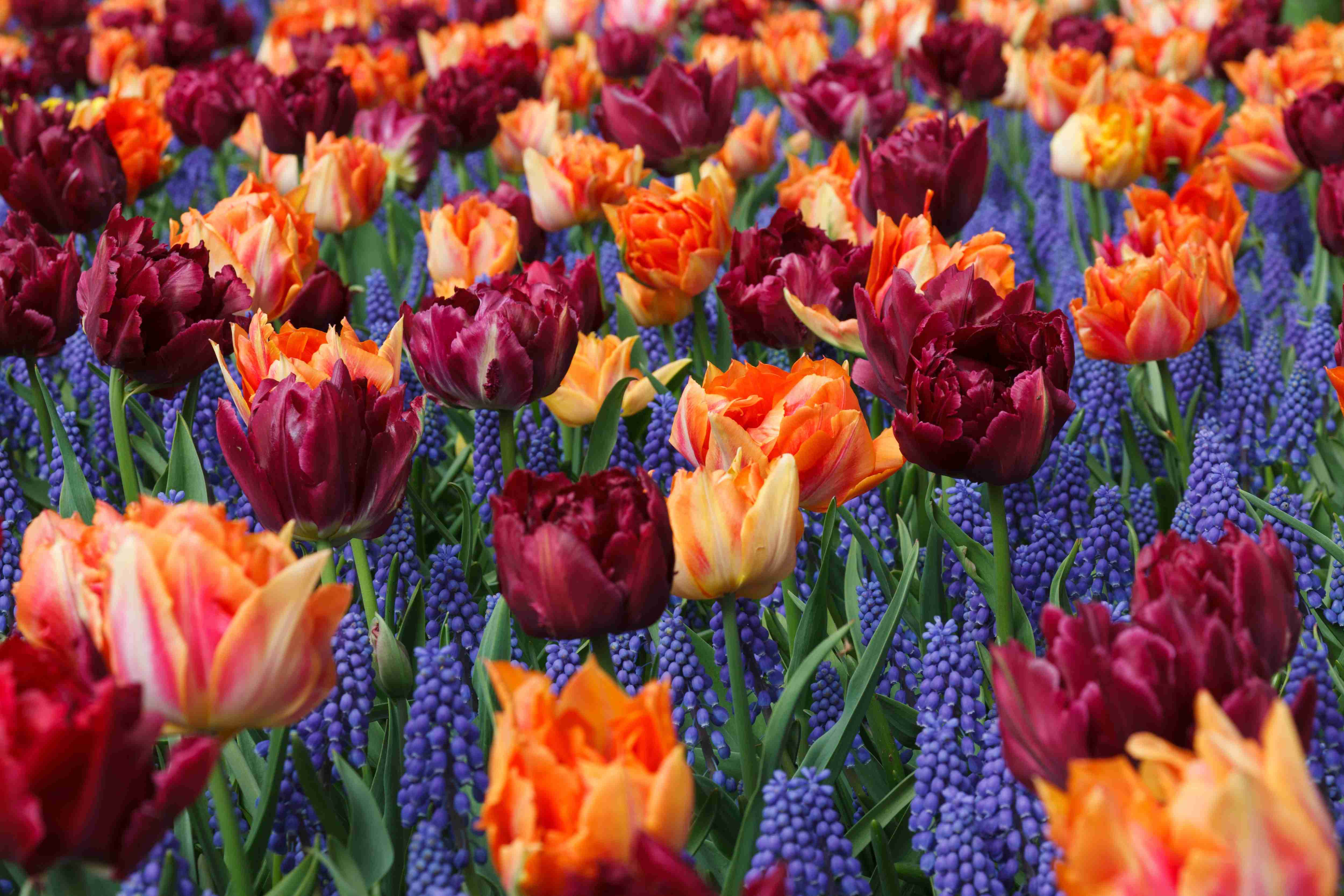
Tulips ‘David Teniers’ and ‘Willem oranje’ – Muscari ‘Big smile’
To create a blue tide
We love Muscaris in monochrome, and for good reason! They are among the most beautiful blues in the garden. Bright blue (‘Blue Magic’, ‘Big Smile’), sky blue (Muscari azureum, M. ‘Ocean Magic’), pale blue (Muscari ‘Valerie Finnis’), cobalt blue (‘Dark Eyes’), in shades (‘Mountain Lady’), purple-violet (Muscari comosum ‘Plumosum’), bluish black (M. negletum) mix them to create a azurean bed.
By complementing the scene with other highly floriferous plants such as Vinca Minor, Scillas, Hyacinths, Iris germanica ‘Blueberry Bliss’, Columbines ‘Blue Star’ or Caucasian Myosotis, you will achieve an ocean of blue flowers.
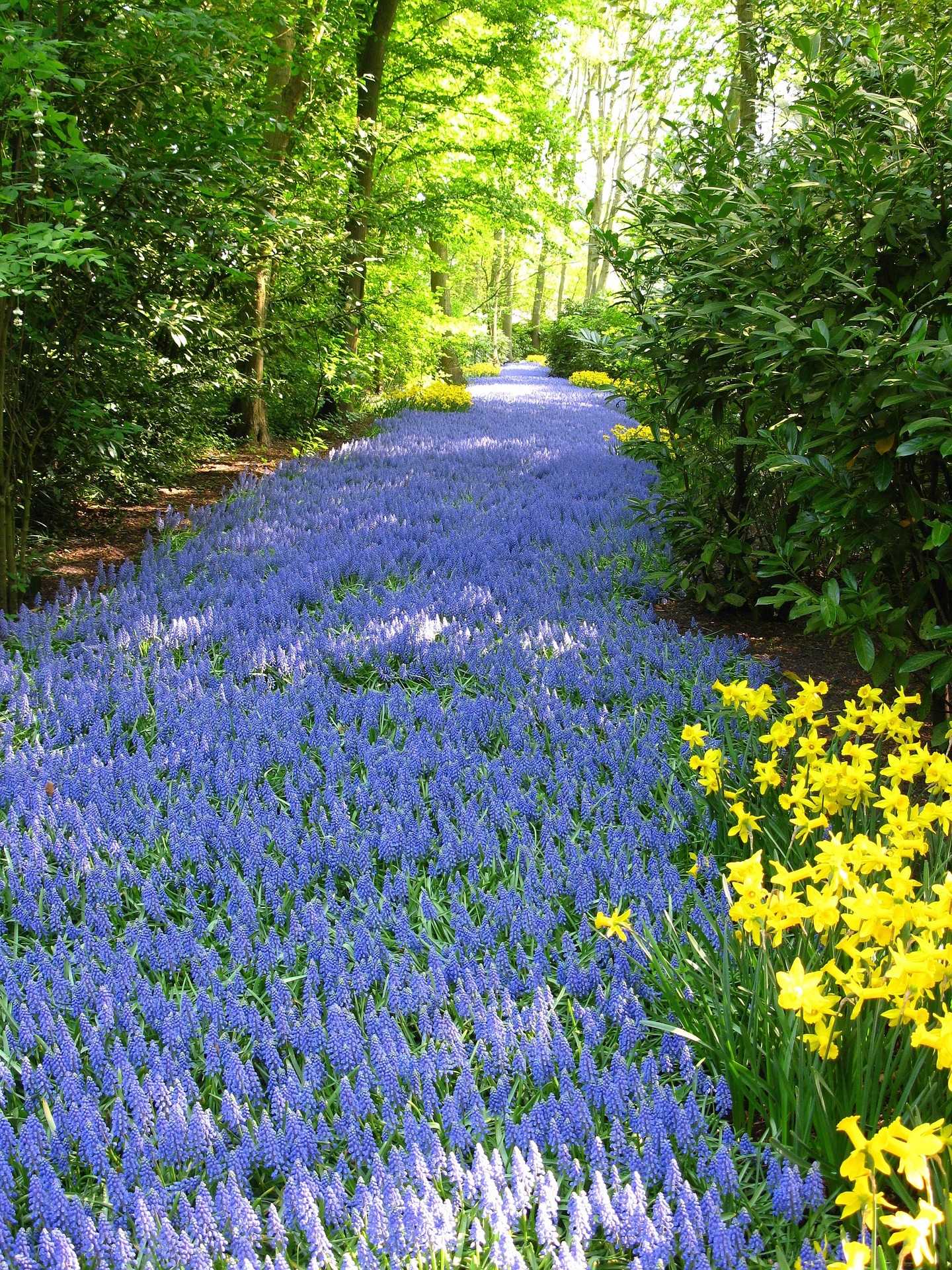
At the foot of the trees
Planted in masses, Muscari provide an abundance of floral spikes in spring, making them excellent companions for under-planting deciduous trees, in woodlands, alongside other bulbs such as Daffodils, Wood Anemones, Crocuses, and Ipheions. These small bulbous plants flower before the foliage of the trees develops, thriving at their feet without suffering from overly dense shade that could hinder their flowering. They will also blend well in Japanese and minimalist gardens surrounded by mosses and Irises.
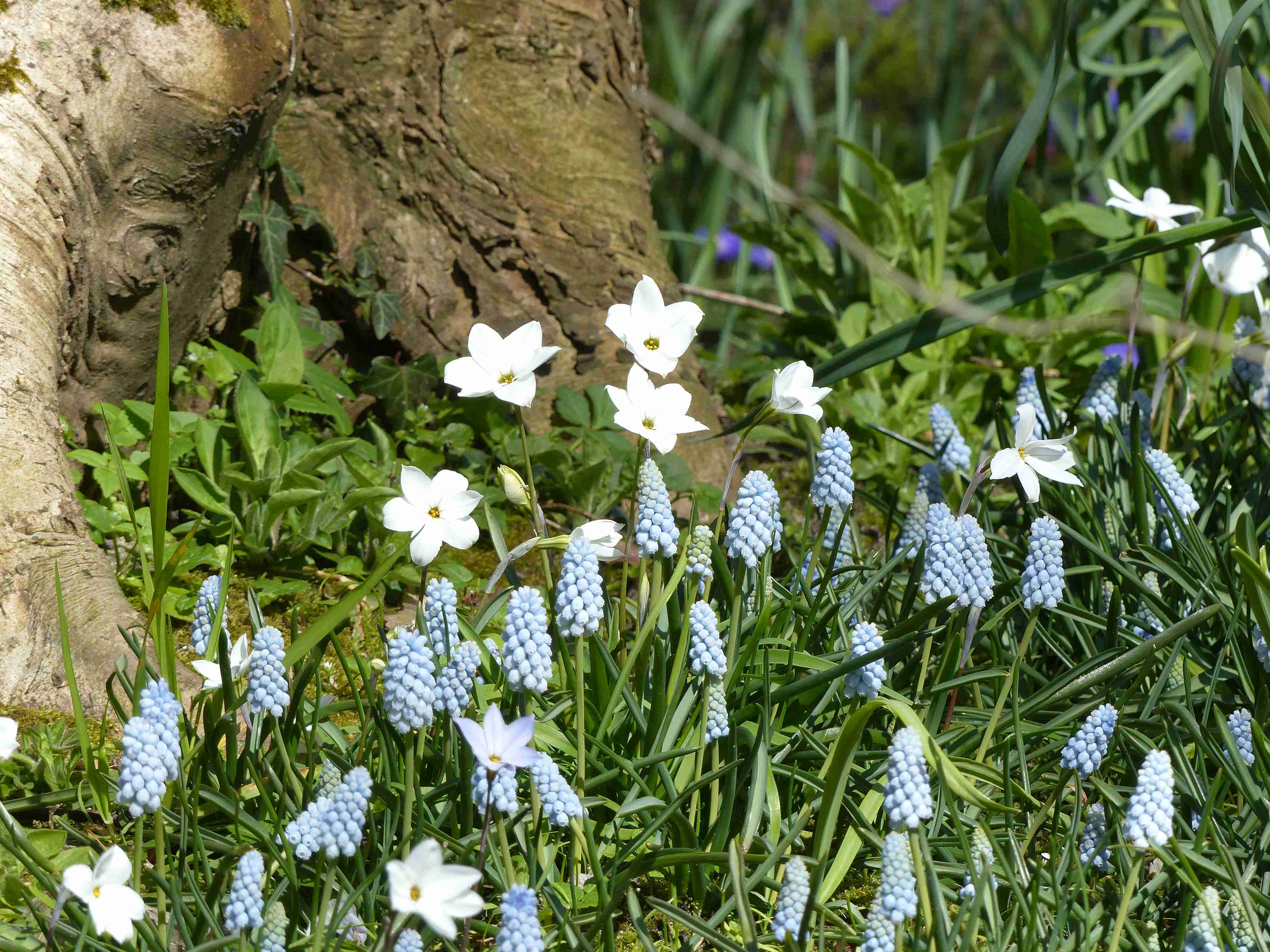
Muscari ‘Valerie Finnis’ and Ipheion in a minimalist spirit
To dress a flower bed
Very floriferous, Muscari are excellent bulbous plants planted at the front of a flower bed. Their upright spikes, often in intense colours, will awaken these areas by creating graphic vertical accents and bringing very bright touches. Grown at the front of a border, while waiting for the other plants to bloom, they will work wonders alongside sun-loving perennials such as Aquilegias, Aubrietas, Myosotis, Fritillaries, or garden Irises, as well as other bulbous plants like Hyacinths and Daffodils.
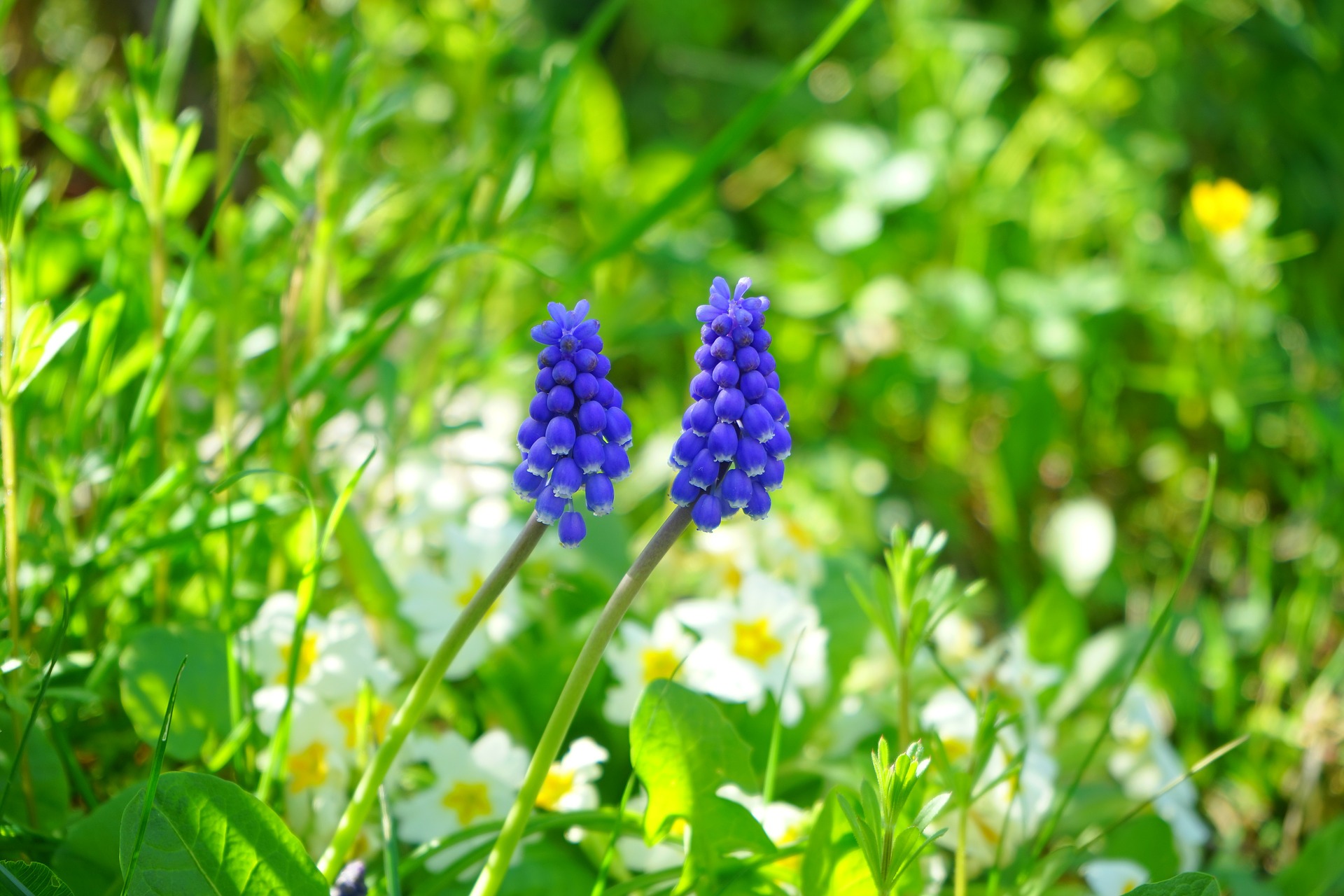
The flowering in the form of small clusters of very bright medium blue of Muscari ‘Blue Magic’ associated with that of primroses
With hyacinths
Here is a marriage as simple as it is obvious! Undoubtedly because these two bulbs herald the arrival of spring, a mix of Muscaris and blue and white hyacinths will create a composition that is certainly quite ephemeral (1 month) but so floriferous and fragrant that one cannot resist it.
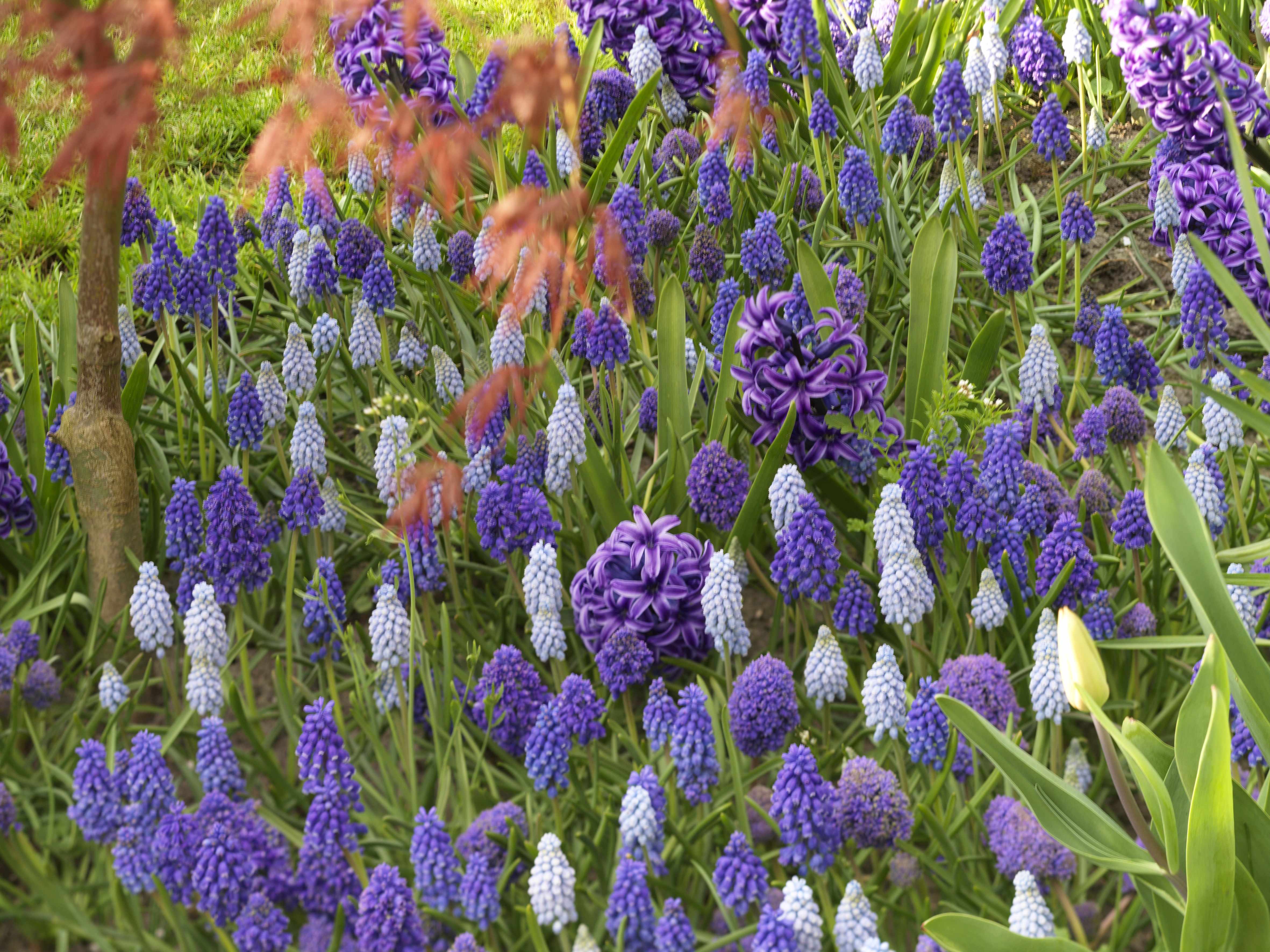
Lovely spring marriage composed of Hyacinth ‘Rembrandt’, Muscari ‘Blue Spike’ and Muscari ‘Ocean Magic’
In beautiful spring pots
In pots, in planters, in generous bowls or in less traditional containers, Muscaris lend themselves to all desires to enhance your terrace or balcony, giving it freshness and brightness. Planted closely with Triumph Tulips, Anemones, Scillas, small Daffodils, and mini Jonquils, Muscaris will bring a bright and colourful touch for three weeks from March to April.
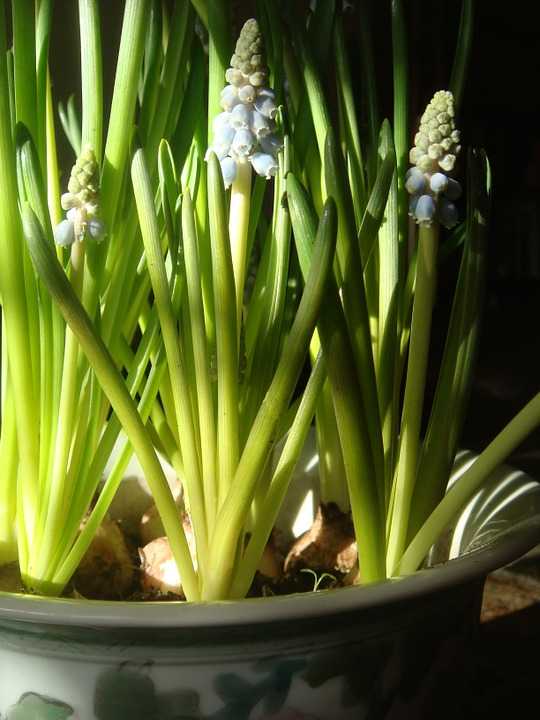
- Subscribe!
- Contents































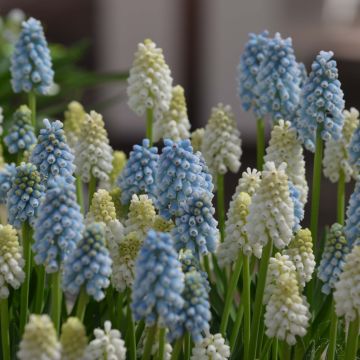
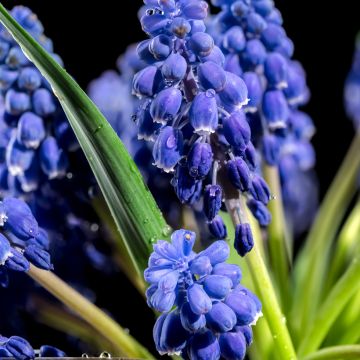
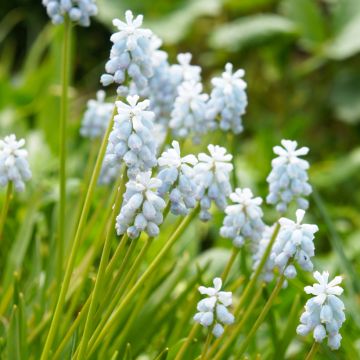
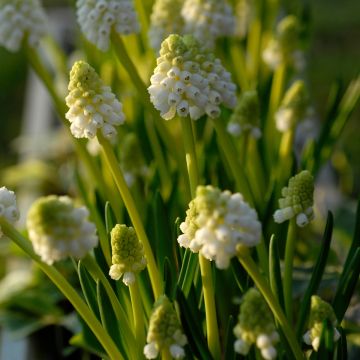

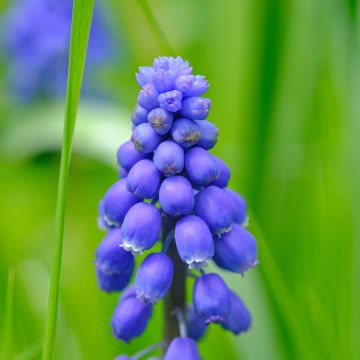

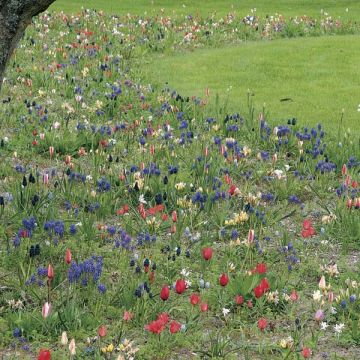
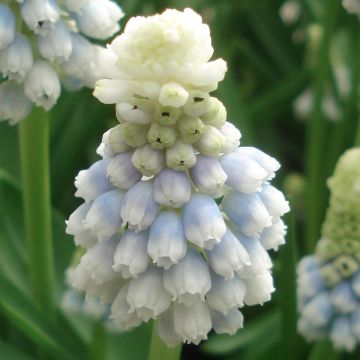
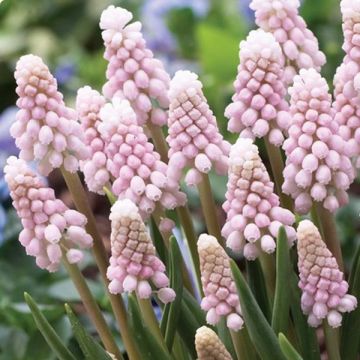
Comments